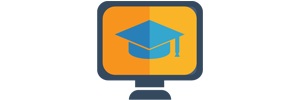
MOOCs are open to unlimited enrollment. Thousands of people can enroll in a course through web access. MOOCs often blend traditional course presentations, such as texts, videos and projects, with opportunities to build communities around massive numbers of students, professors and any type of participants. Enrollment in the university is not a requirement and people from teens to retirees around the world have enrolled into MOOCs.
How Did MOOCs Get Started?
Once online access became available to multitudes of people, the door opened for unlimited educational opportunities. Dave Cormier coined the term MOOC in 2008 in reference to a course called Connectivism and Connective Knowledge offered by the University of Manitoba. Twenty-five students had paid tuition to take the course but an additional 2200 students who also took the course paid no tuition. From there additional faculty began offering distance learning in the free, open enrollment format of a MOOC. A popular factor making its way into current MOOCs is the use of “gamification.” Techniques used in popular video games, such as earning points and opening advanced levels are making their way into the MOOC classroom. Platforms for presenting MOOC content are more established in English speaking universities, although learners from around the world participate. Coursera, edX and Udacity are used in the US and FutureLearn is common for MOOCs in the United Kingdom.
A Basic MOOC Classroom
Questions for discussion are posted and those enrolled in the course are expected to contribute to the discussion based on readings, texts and videos posted relevant to the discussions. Peers evaluate work submitted by using provided rubrics. For every paper a student submits, he or she is required to evaluate a pre-determined number, usually three. Individual courses have traditionally been free of charge and a productive way to earn professional development credit for enhancing job status.
Still mainly free of charge, universities have progressed to offering credit toward a degree for courses taken in the MOOC classroom. Therefore, a cost is becoming associated with attending MOOCs when completion is desired for credit towards a degree. However, tuition is a fraction of the traditional cost for a degree. Bachelor and master degree programs have been established by prestigious universities. When credit is earned toward a degree, a student’s work is generally evaluated by the faculty member facilitating the class.
Although controversial to many, MOOCs have continued to grow in popularity and in attendance. The diverse community adds dimensions and ideas to the whole that are impossible in a small, homogeneous classroom.
Related Resources:
